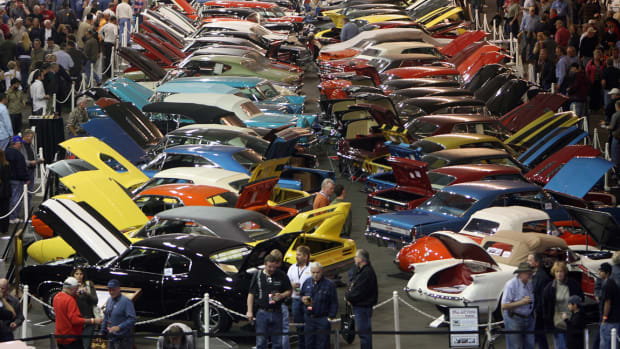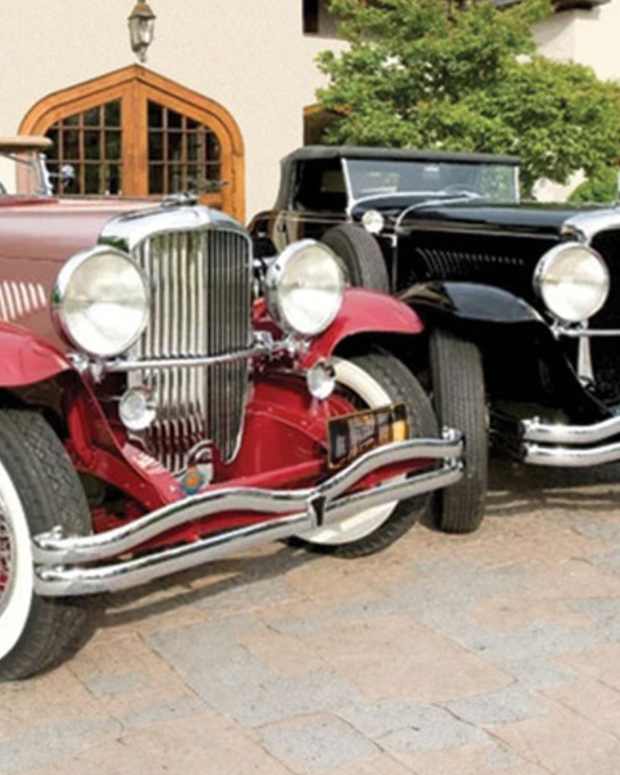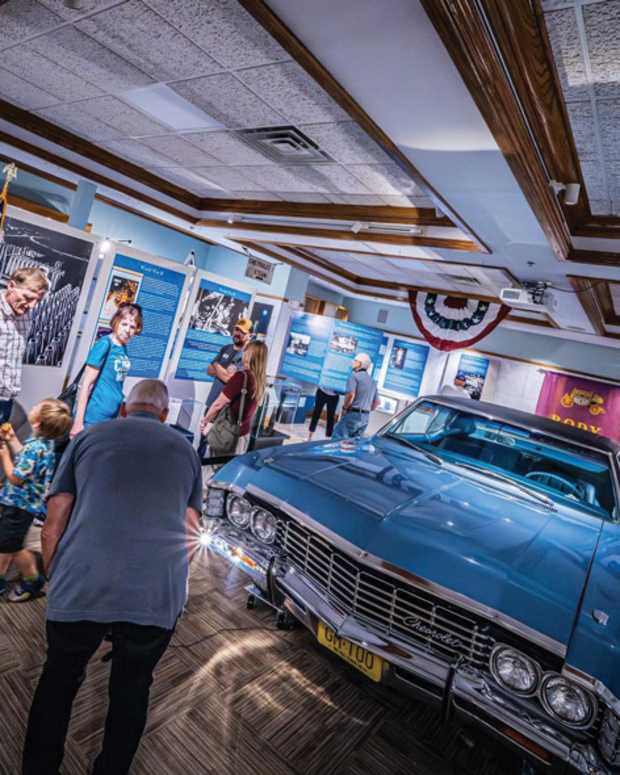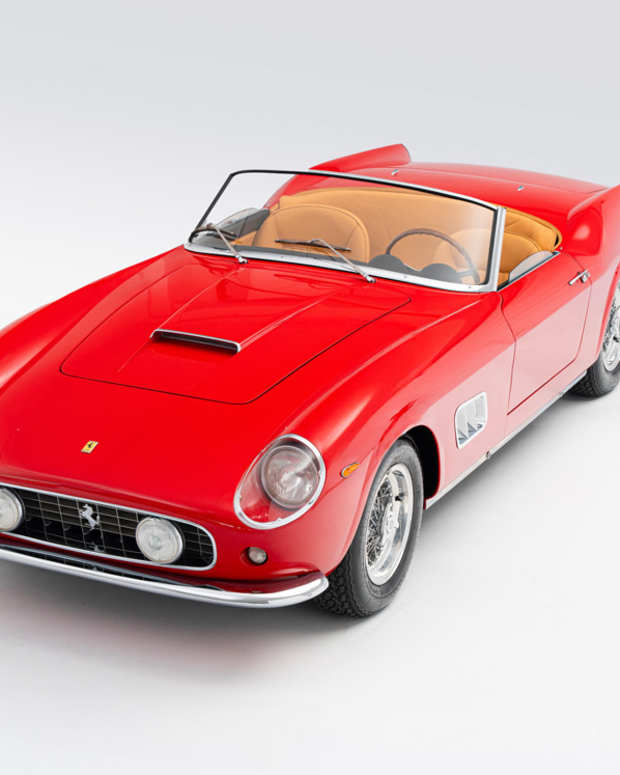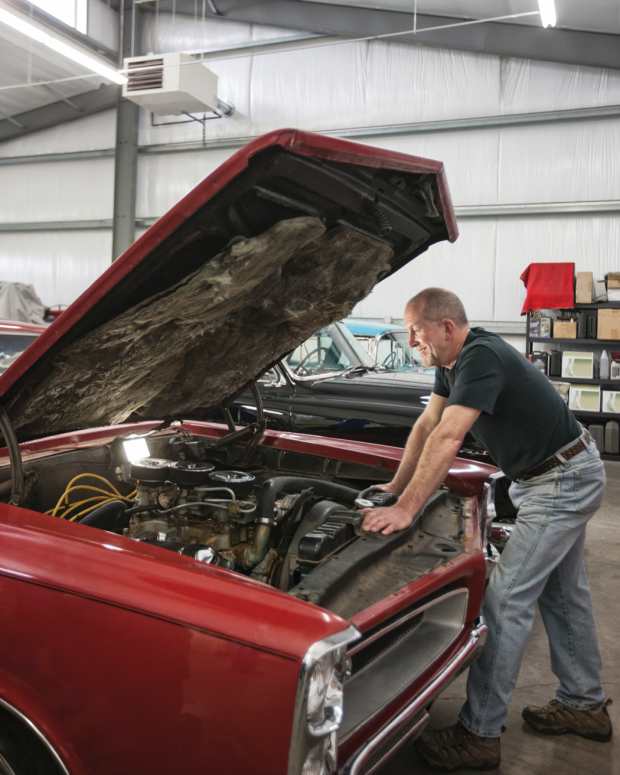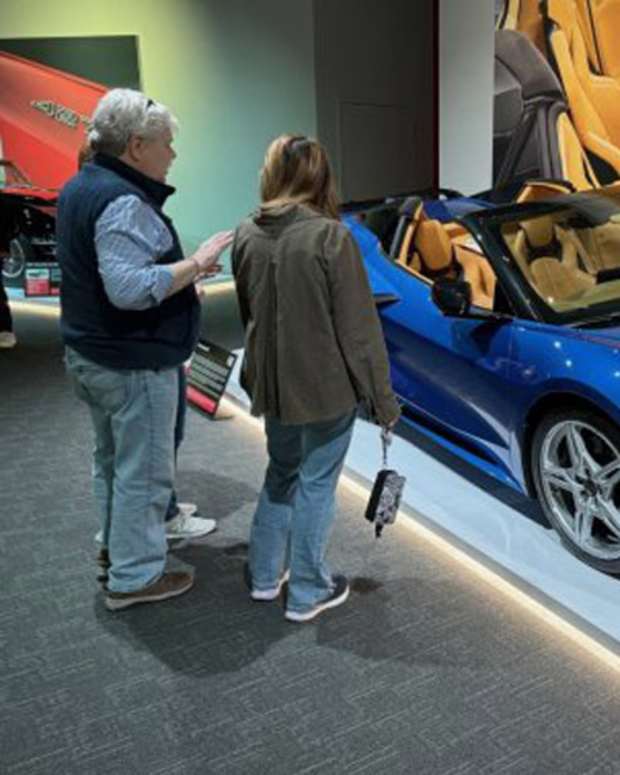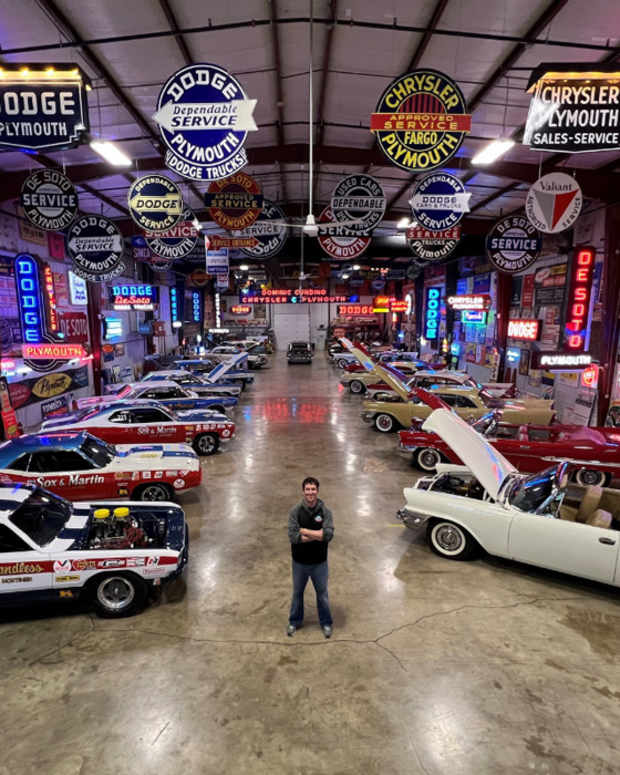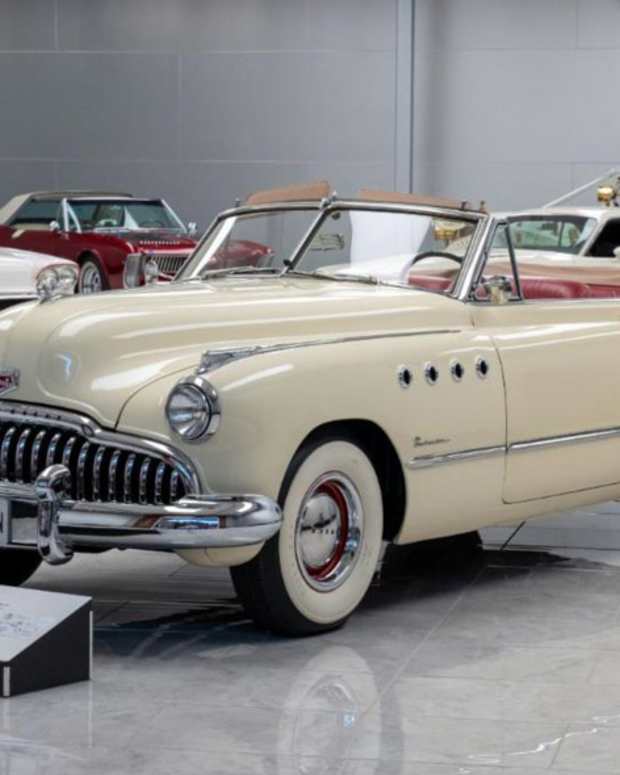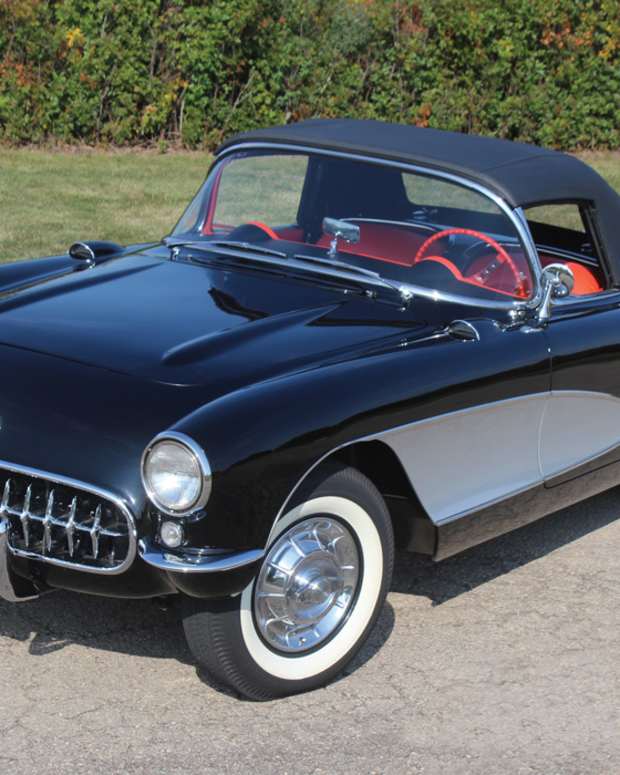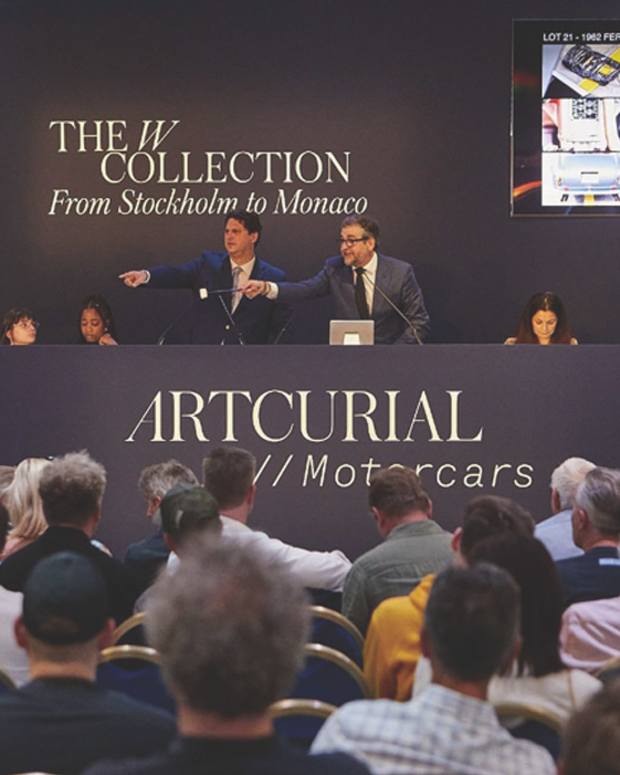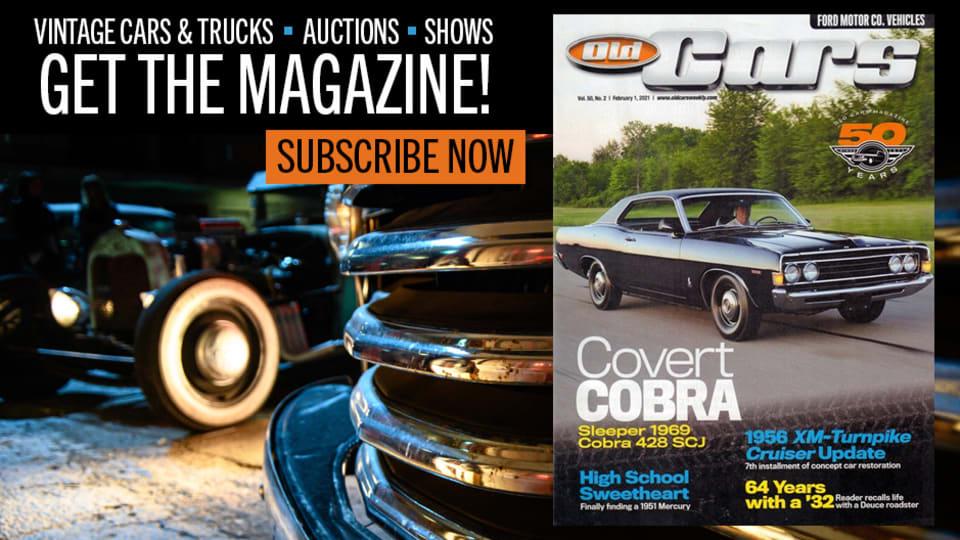Car of the Week: 1932 LaSalle Model 345-B
Story and photos By Angelo Van Bogart
Although gone from the automotive landscape since 1940, LaSalle has lived on in popular culture, partially thanks to the lyrics of “Those Were the Days,” the theme song of the popular 1970s TV sitcom “All in the Family.” Every Sunday night, TV characters Archie and Edith Bunker sang those lyrics from their piano to open the show with, “Gee, our old LaSalle ran great—those were the days.”
LaSalle also lives on by those who own and love one of the survivors, most of whom agree with the song lyrics. Among them is Charles Meyer who, with his late father Dr. William Meyer, bought the featured 1932 LaSalle Town Coupe in 1992.
“It’s a wonderful driving car,” Meyer said. “It’s not a particularly fast car. It’s very low-geared because it’s a Town Coupe and that means, of course, that it was designed for city driving.
“It’s not as fast as [our 1929] Auburn Cabriolet, not as spry on its feet as the Auburn, but it’s a different car. It’s an upper-middle luxury car versus something that is a little sportier.”
LaSalle gets its start
The LaSalle’s reputation for being a fine-driving automobile began at its inception in 1927. Designed to fill the perceived price gap between Cadillac and Buick, the LaSalle was one of a myriad of General Motors companion cars offered beginning in the 1920s. As part of GM board chairman Alfred P. Sloan’s plans to offer a car for every wallet, Oakland offered Pontiac as a companion between itself and Chevrolet; Oldsmobile offered its Viking companion between itself and Buick’s Marquette companion car; and Cadillac offered the LaSalle between itself and Buick.
As the Great Depression raged and car marques disappeared like spent fuel, Pontiac usurped Oakland, which was killed for 1931. The Marquette and Viking had short lives, lasting only one and two years, respectively. The LaSalle, however, was sold until 1940 when rising Buick quality and competition from Packard’s Junior models squeezed LaSalle out of the marketplace. Further crippling LaSalle sales was the country’s return toward prosperity and toward more expensive Cadillacs. Regardless, LaSalle started strong because of its styling and the fact that it truly did run great.
While credit for the new LaSalle’s engineering goes to Cadillac’s engineering department, Harley Earl gets complete credit for the first LaSalle’s styling. Earl designed car bodies at Earl Automobile Works, his father’s custom coachbuilding shop in Los Angeles, well before LaSalle was dreamt and earned a reputation for his imaginative and flamboyant designs in the 1910s and 1920s. He was also innovative, modeling those designs from clay so that customers could better visualize the designs. His designs and process made him famous in styling circles, and his clientele included many silver screen celebrities of the 1920s. When California Cadillac distributor Don Lee bought out Earl Automobile Works, Earl went with the concern.
When GM began contemplating the car that would become the LaSalle, Larry Fisher—then president of General Motors—urged Earl to submit a design proposal in their competition for the future LaSalle. Earl had met Fisher’s brother, Fred, at the Los Angeles Country Club, and so the brothers of Fisher Body fame were already personally and professionally familiar with Earl.
At this time, one of the highest-regarded automobile designs was that of the French-built Hispano-Suiza. Earl recognized the beauty of the Hispano-Suiza and drew inspiration from its grille design, conical headlamps and tall and wide hood louvers and its overall light-appearing body in his design for GM. Earl was in competition with others for the design of Cadillac’s future companion car and by being the only competitor to display clay models of his design across four body styles (touring, sedan, roadster and coupe), he further solidified his win.
LaSalle was a hit from the start with Lynn McNaughton, vice-president of Cadillac, quoted in Cadillac’s in-house publication Clearing House: “The reception of the LaSalle has been the most gratifying thing in my long experience with Cadillac.” His comments came days after the LaSalle’s March 5, 1927, introduction. One month later, Earl was asked to head the new Art and Colour department of GM, making the company the first to create a styling department. It was acknowledgement that styling sold cars, and it was an investment that provided great dividends to GM through the Great Depression and beyond. And it all goes back to LaSalle.
Besides being a beautiful car, the 1927 LaSalle was a runner. Its 303-cid, 75-hp V-8 engine was developed by Cadillac and tested by driver Bill Rader in mid 1927, who ran a stripped roadster to a 95.3-mph average over 951 miles at the GM Proving Ground. The average speed was just a couple miles per hour less than that of the Duesenberg that won the 1927 Indy 500 race.
LaSalle sales were off to a strong start with 26,804 sold from March 1927 through the 1928 model year. In 1929 alone, 22,950 LaSalles were sold but once the stock market crashed in October 1929, so did subsequent sales. LaSalle sold 14,995 cars in 1930; 10,096 in 1931; and just 3386 in 1932, the model year of LaSalle that Harley Earl considered among his personal favorites for this, his favored brand.
Of those 3386 LaSalles built for 1932, just 383 were examples of the featured Model 32-672 five-passenger Town Coupe with a Fisher body. Despite being such a low figure, the Town Coupe was the third-most-popular LaSalle body style that model year. Having just four owners since new, this LaSalle has proven to be a keeper for each of its Wisconsin-based owners.
A short list of doting owners
This LaSalle’s first owner was a doctor who used it on house calls until 1937 when he sold it to his friend, Mrs. Anita Kanen. She kept the car until 1972 when, at 90 years of age, she sold it to Dennis Zefran, a Cadillac & LaSalle Club technician for late V-16 Cadillacs.
Owner Charles Meyer and his late father purchased the car from Zefran back in 1992 because the elder Meyer had fond memories of owning a V-16-powered 1932 Cadillac Series 452-B Imperial Sedan.
“My father had a 1932 V-16 as a kid and that car went away because he didn’t have the money for tires,” Meyer said. “He was a teenager at the time and he had no business owning that car. Why would any kid in the 1950s have money for that?”
Meyer said his dad was car crazy because his father was, too. Grandpa owned Jaguars, and he and Meyer’s father bought a Model A Ford together in 1951. Meyer inherited the bug (and eventually the Model A) from both men, and so 27 years ago, Meyer and his father went looking together for an old car.
When the pair found the 1932 LaSalle Town Coupe, Dr. Meyer already had a Packard that needed restoration. Although he was 57 years of age at the time, Dr. Meyer found himself using the same logic he had used as a teenager to sell the V-16.
“My father at that time already had a 1937 V-12 Packard that needed tremendous amounts of work, and we wanted to find a Classic car that was already done or basically original,” Meyer said. “My dad always thought about replacing the V-16 he had, but as the years went on, those cars became very expensive, not so much in the valuations, and they did, but in the maintenance and restoration of an early V-16. They are prohibitive to redo.”
As the companion to Cadillac, LaSalles looked like their partner car and in 1932, were even powered by the same 353-cid V-8 engine; they also benefit from the innovative Cadillac and LaSalle Synchro-Mesh synchronized manual transmission. Inside, the LaSalle shared the “dual tombstone” instrument panel design with the Cadillac Series 452-B V-16, leaving the elder Meyer to surmise that the driving experience between the LaSalle and his old V-16 would feel similar from the driver’s seat. Meyer says he was correct, and both men spent a fair amount of time at the steering wheel. Today, the odometer shows 12,667 miles and Meyer believes it’s original.
“I do not believe that this [odometer] has been tampered with or turned over,” he said. “I do not believe this motor could do 100,000 miles originally.”
Except for a 1960s repaint from the original green to the current maroon with black fenders, the car is original. Upon purchasing the car, the Meyers had the engine water jackets repaired and engine bearings replaced. However, the engine has otherwise not been opened so Charles thinks it’s due because of its age, rather than the mileage. He plans to have the engine rebuilt later this year.
“That engine went to a lot of places that it should not have,” he said. “Basically, that is an original engine and we were driving it down [Wisconsin] Highway 22 at 50-55 mph and you know as well as I do, that is pretty scary in an old motor and we shouldn’t be doing that.
“That engine is not the monobloc yet—that has the separate cylinder heads with the crank case—and yes, I have an extra set of cylinder blocks for that car because all of that stuff was all cast in place. It really wasn’t meant to be around 80 years after the fact. I am quite sure that Mr. Sloan wanted you and the misses to buy the ’34.”
The interior upholstery, even the retractable curtain in the rear window, remains original, so the men have taken great pains to preserve it. But that hasn’t stopped them from enjoying it, often together.
“He loved the car very much and I think the reason he loved it so much was because it was a car that started right away without futzing with it. It was a car that was real reliable. It can sit all winter and you can tap on top of the carburetor and get that U-shaped float unstuck and it starts immediately. It’s a fine, fine old car.”
Until and beyond its upcoming engine rebuild, the LaSalle will continue to be a lasting and drivable memory machine for Meyer, taking him back to the days spent behind the windshield with his father.
______________________
Show us your wheels!
If you’ve got an old car you love, we want to hear about it. Email us at oldcars@aimmedia.com
*As an Amazon Associate, Old Cars earns from qualifying purchases.
























